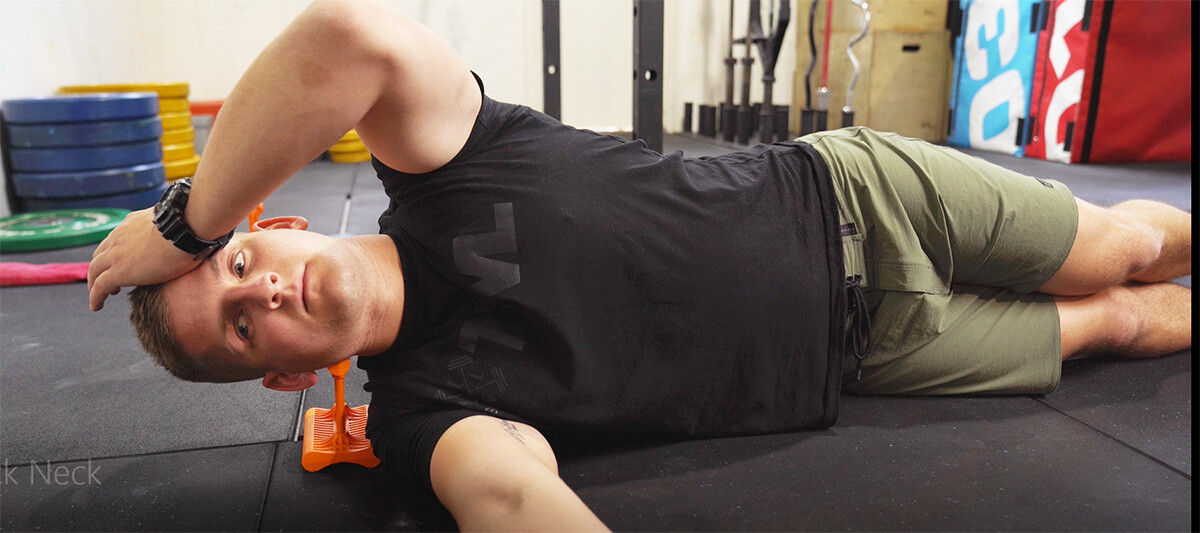
Why use self-massage tools?
Self-massage tools can be a cheap and effective way to self-care and manage your pain and release tight muscles. As a Physiotherapist (PT) I recommend self-care to most of my patients as it is an excellent way to help release muscle tension, improve blood flow and release aches, pains and trigger points that cause a lot of pain and disability. Being able to stretch problem fascia in a professional way allows you to stay on top of aches and pains that would be difficult to manage by going to a therapist regularly and at a much lower price.

What are the best self massage tools?
Mobilization Magic Tool – This Therapist-designed tool has a small contact area like a Therapists elbow to effectively stretch and release tight fascia.

Percussion Massage Tool/Guns – Vibrates muscles with a reciprocal piston movement which can soften muscles, but does not stretch tight fascia.

Foam Rollers – Use diffuse pressure to soften muscles and gently stretch tight fascia targeting big muscle groups such as the quads, hamstrings, TFL and the lower back muscles.

Trigger Point Cane – Used to release trigger points with its small contact area and soften tight muscles, can stretch tight fascia in a limited way. Used mostly on neck, shoulders and back areas.

Rolling Stick – Smaller diameter and so the pressure is more concentrated than foam rollers but acts in the same way.

Hard Balls/Spikey Balls – Laying on these balls softens firm muscles and releases trigger points, can also be used against a wall.

IASTM Tools – These are mostly therapist used tools but can be used on areas accessible by the user. They use the edge of tool to soften and release tight tissues.

So how do these tools work?
The myofascial system comprises contractile muscle tissue and connective tissue that surrounds and runs through these muscles. A lot to the aches and pains we feel in our muscles are due to what we call ‘trigger points’ which are localised electrically charged area in muscle fibers. Tight fascia also interferes with the blood and nervous system also causing pain and disability.
Massage tools work by either discharging the accumulation of electrical energy of Trigger points or by stretching the tight sheets of fascia that constrain the muscles, contractile, metabolic or electrical function. The fascia is stretched by a process called creep which describes how sustained stretching forces the fascia to lengthen its fibers. For more info go to https://en.wikipedia.org/wiki/Creep_(deformation)#Examples
The Trigger point diagram above shows your people feel pain in so many different areas
But due to factors such as physical injury, stress, poor posture and a lack of movement, we can develop tension in our fascia which can limit movement, cause pain and affect our ability to perform our daily activities.
Self-back massage tool
The tools above can all be used to work on the back muscles and joints. Back pain is caused by issues in both of those structures and can be layed on to release the muscles and help the joints get moving again.

5 comments
Mitch
26 May 2024 at 8:06 am
I appreciate the depth of research and the references to
scientific studies. It adds credibility to your blog.
Buy Surveillance Camerawoman TTD
4 July 2024 at 7:38 am
I am genuinely glad to glance at this webpage posts which includes
lots of valuable data, thanks for providing these information.
Felix Meyer
5 July 2024 at 7:36 am
Awesome page with genuinely good material for readers wanting to gain some useful insights on that topic! Keep up the great work!
Candleflame MM2 Value
5 July 2024 at 5:21 pm
Excellent blog! Do you have any recommendations for aspiring writers?
I’m hoping to start my own blog soon but I’m a little lost on everything.
Would you recommend starting with a free platform like WordPress or go for a paid option?
There are so many options out there that I’m completely overwhelmed ..
Any suggestions? Appreciate it!
Seoranko
23 July 2024 at 5:12 pm
Your ideas absolutely shows this site could easily be one of the bests in its niche. Also, I look forward to your new updates.